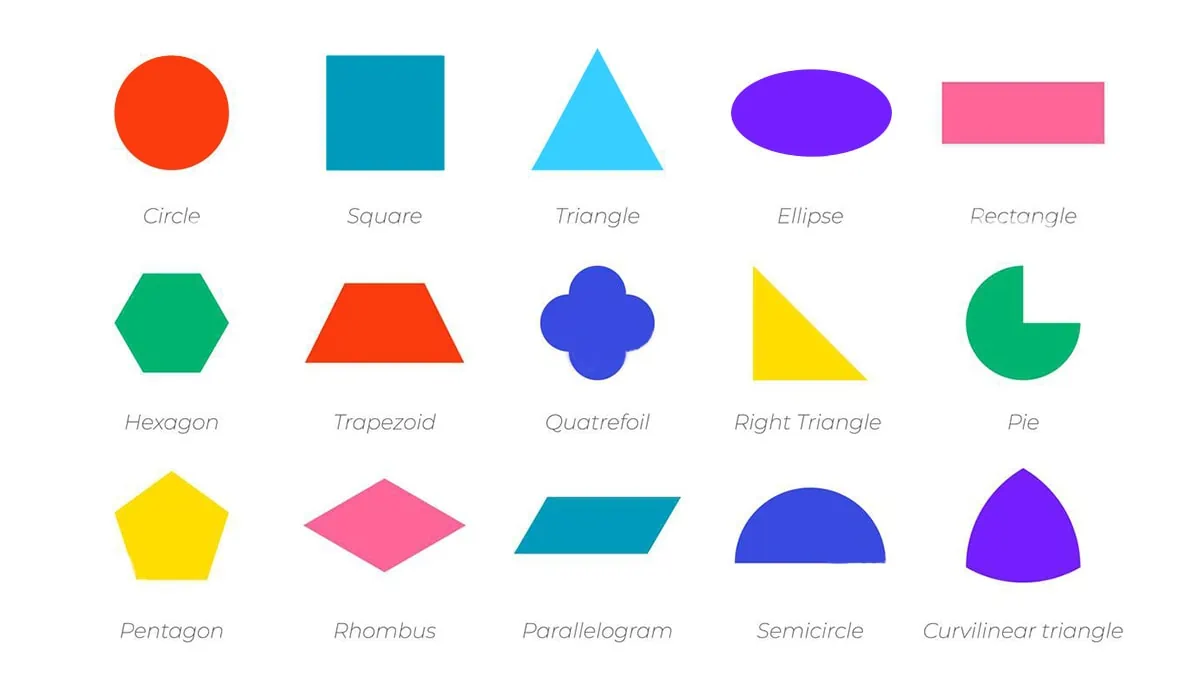Circles, squares, rectangles—these are all the shapes, right?
But, do you know that these aren’t the only shapes in the art niche!
Yes! I know that it is a fact that you will be surprised to know, so let us learn about this concept together!
Shape in Art!
If we go by the definition of shape in art then it is defined by lines and boundaries, the basic element of art.
Also, an element of art that is two-dimensional, flat, or limited to height and width.
It is pretty evident that shape in art has to be one of the most important elements to give any artwork its base and structure.
It takes many shapes to form a single piece of art, and that is not limited to the few fixed shapes that we are aware about.
It revolves around the whole spectrum of shapes, but one thing remains constant that is they are two dimensional.
PS: What if shapes get three-dimensional? Then, they are known as form in art.
Without further ado, let us jump right into the pool of shapes in art and try to uncover the concept of it.
Table of contents
What is Shape in Art?

Shape in art is the foundation of all great masterpieces.
It is a fundamental element of art that can be used to represent a variety of subject matter in painting, sculpture, and architecture.
Shape can influence composition, help with complex drawings and paintings, and add to the sense of harmony in art.
Another way to think of shape is as a two-dimensional region that is determined by a shift in value or some other kind of contrast.
An outline surrounds a two-dimensional area, which is the simplest definition of a shape.
Shape refers to a subject’s external form, contours, or outline in the context of art.
Although shapes in paintings and drawings are two dimensional, artists can make them appear to be three dimensional by adding other elements such as line, color, value, and shadow.
Suggested Read: Patterns in Art
Types of Shapes in Art
Even though there are many shapes in the spectrum of art, when it comes to closely staggering it down into categories, shapes are of two types!
I have researched the fact that shapes can be classified into two categories.
The two categories are organic and geometric shapes.
Organic Shape

Some shapes and people do not need boundaries, or, I should say, don’t fit under a spectrum.
That is the exact case with organic shapes, or, as said in general, free hand shapes that are not bound by space or lines.
When you take a closer look at the organic shapes, you will see that they remain liquid, which means they adjust their flow as per the artist.
It is crucial to remember, though, that organic shapes can also seem angular.
They are completely man made and do not follow specific dimensions or a set of rules.
Some examples of organic shapes are: foot, plants, birds, trees, etc.
Geometric Shape

The shapes that can be mathematically found are those that fall under geometric shapes.
It is also stated that geometric shapes follow lines and boundaries and are enclosed within a specific dimension.
Geometric shapes, such as the triangle, square, and circle, are made up of points and lines.
Other shapes require mathematics to create because they are so complicated.
Contrary to organic shapes, these shapes are geometric.
Organic shapes are natural, whereas geometric shapes are more precise.
Geometric shapes are often associated with human-made structures like brick, doors, bridges, etc.
Importance of Shape in Art

Now the biggest question that might arise is Why are shapes even important?
For that, I would like you to answer that, if there’s no water, will it be possible for you to survive?
That is the case when it comes to the importance of shape in art.
Shape can have an impact on composition, assist with challenging paintings and drawings, and add to the overall harmony of the piece.
Another way to think of shape is as a two-dimensional region that is determined by a shift in value or some other kind of contrast.
Shapes in art give a basic structure to an artwork and also give it extra support.
It also helps in balancing the paintings and the rhythm in art.
Famous Instances of Shape in Art

Famous instances of shape in art can be seen in a lot of different artworks, including those by Pablo Picasso, like two girls reading.
Also, artworks like Composition VII and Composition 8 by Wassily Kandinsky are some of the most prominent examples of shape in art.
Every type of shape is used by artists in some of the famous paintings in some or the other ways.
Squares, rectangles, and triangles are examples of geometric shapes that are exact and regular.
While biomorphic shapes are found in nature, they are frequently found in man-made objects such as structures and machines.
These shapes may resemble leaves, flowers, or clouds—things that grow, flow, and move.
Conclusion
Penny by penny makes money, and shapes by shapes make a work of art!
So, with that being said, I now rest my words about the concept of shape in art.
It is also well said that it takes zero to build a perfect digit, and no matter what, it takes some accurate shapes to make a form of art.
So, if you are a beginner or a pro in the field of art, you might know how important shapes in art are.
Not only is it an element of art, but it also acts as a building block for any artwork.
Author’s Epilogue
If you are still here, then thank you so much for staying till the end!
This was all about shape in art.
We try our best to provide you with the most refined and researched information, so if you find this blog helpful, then do leave your valuable feedback in the comments.
Also, we are active on social media platforms and post fun content there; say hi to us on Instagram or Pinterest.
We are actively posting on YouTube, so don’t forget to subscribe <3
See you soon; till then, stay hydrated!
Bye bye!
Frequently Asked Questions
Shape in art is important as it provides structure to the artwork, also helps in balancing the symmetry of an artwork.
As far as the geometric definition of shape states that any enclosed structure within boundaries and width are known as shapes.
Shapes are two-dimensional whereas forms are three-dimensional.





